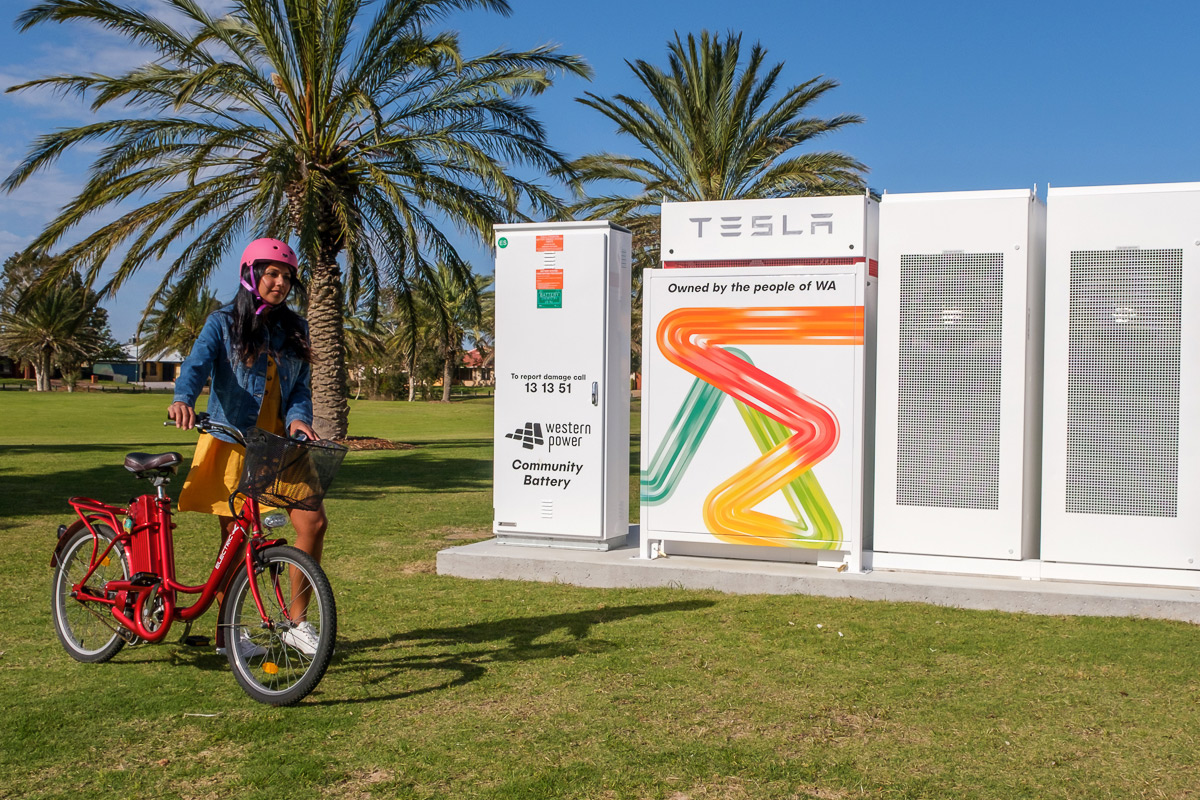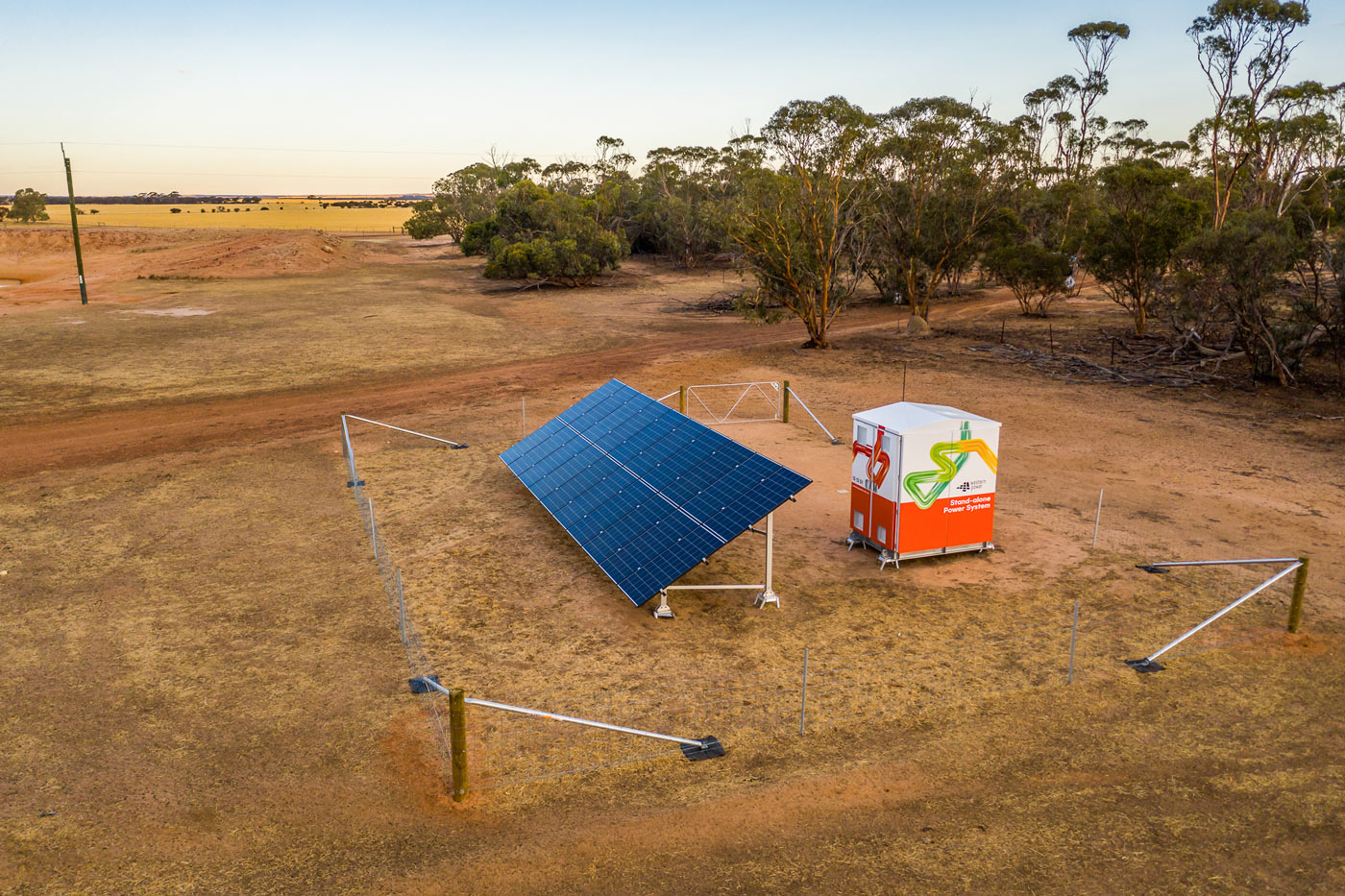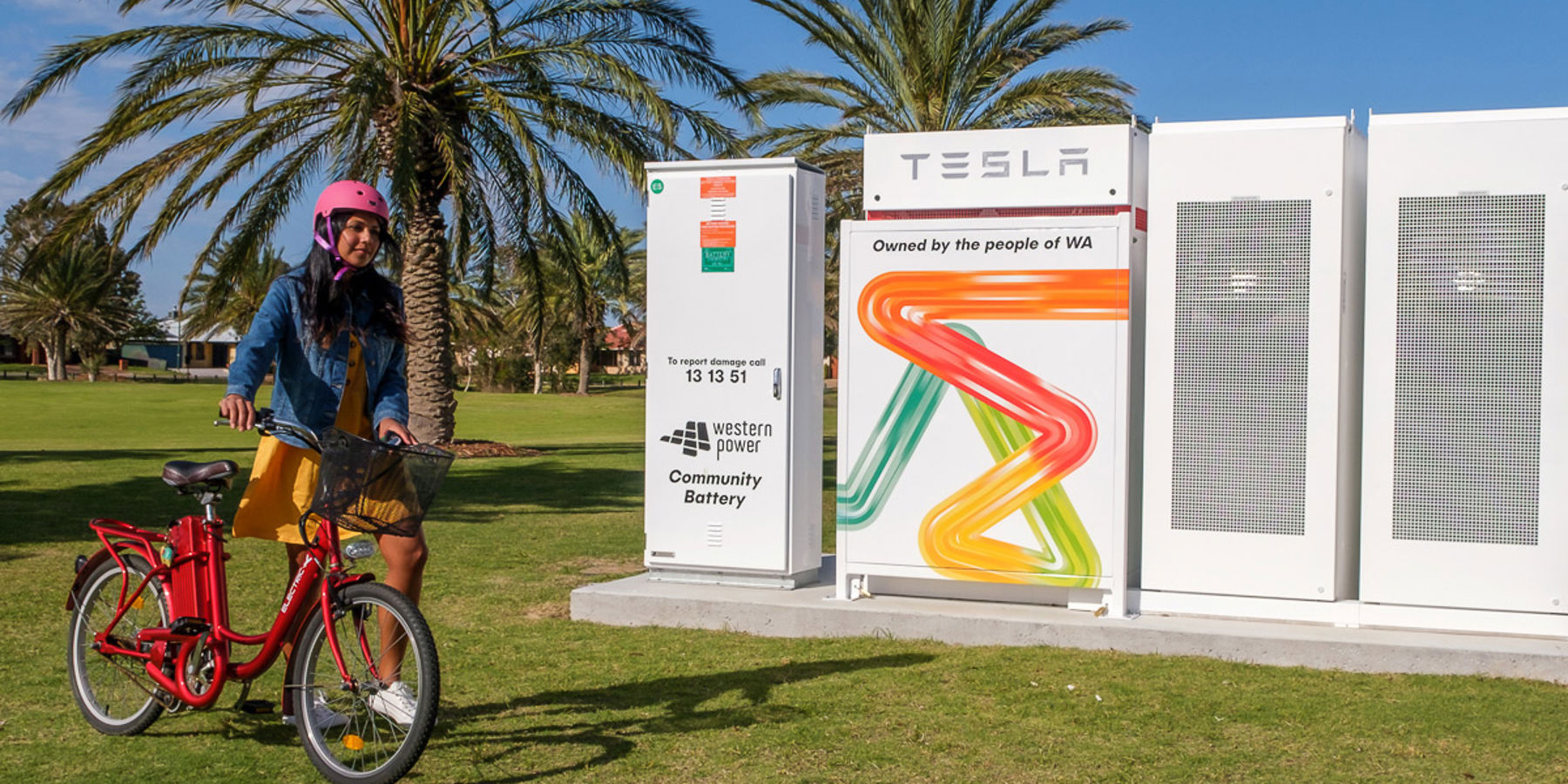By now, it’s likely you’ve seen – or at least heard about - community batteries popping up in the burbs.
With one in three WA homes now owning rooftop solar, the question about what you can do with your excess solar has become a pressing question.
Which is where batteries come in. The ability to store excess solar energy benefits both the grid as it helps control solar flows, and the panel owners, who can potentially use their solar power at another time when they need it.
Batteries therefore have an important role to play in our energy future, and the good news is that no matter the size, there’s a a type of battery to support every community and application.

Different sizes
There’s a huge variety of batteries coming onto the market, which look different and serve different purposes.
You may be most familiar with small in-home batteries, which are around the size of a fridge and store a household’s surplus solar power.
Or you may have seen one of our community batteries that look a bit like shipping containers and are connected to the grid, storing excess solar power from households or businesses in the area.
However there are others you might not have not noticed that we are already using across the network, including:
- Perenjori network battery, which is part of a microgrid and acts as a backup power supply when power from the main grid is interrupted.
- The small stand-alone power systems in regional WA, which include solar panels and a battery and operates as a self-sufficient unit that runs independently from the main electricity network.
- PowerBank batteries that provide shared virtual solar storage for customers who generate solar, so they can store their excess energy and draw the energy back when needed.
- Behind the meter battery, more commonly known as an in-home battery, as part of a five year trial at the Margaret River Recreation Centre.
- Community batteries that store unused solar power from households and discharge at night when the sun isn’t shining and power demand is high.

The battery coming next
Although community batteries have played a big role in helping smooth the power of renewables from rooftops, the amount of new rooftop solar that is continuing to be installed requires new and bigger solutions.
Enter the big battery. A bit like a supersized community battery, it operates the same way as our other community batteries do, soaking up excess power in an area with lots of rooftop solar panels to help smooth power flows and improve power quality.
They just do it on a great scale - at 8m x 2.6m x 2m, they’re roughly the size of a shipping container and can store and discharge 1.34MW / 2.6MWh of energy, substantially more than the capacity of the current community batteries (116kW / 464kWh).
Big batteries will also reduce the need to upgrade or expand the network infrastructure in that area to handle all the extra solar flow, making them a cost-effective solution, and allowing more homes and businesses to benefit from rooftop solar.
Where will the first large community battery be installed?
Three large community batteries will be installed and trialled in Baldivis in the City of Rockingham.
Why Baldivis? It tops the list of solar suburbs with 90% of households generating rooftop solar. The wider City of Rockingham is also the top producer of rooftop solar, with high around 45%* of households in the local government area (LGA) having rooftop solar.
Therefore it makes sense to start with a big battery in this area, to help manage and support the massive uptake of solar in this area.
These batteries will be good for the rest of the grid too. Big batteries allow for more solar on the network overall, which means more of the energy to power our lives is renewable, getting us closer to the greener, decarbonised and more sustainable energy future.
* This data is based on residential solar PV generation capacity and installation and is determined by the minimum value of the invertor size (kVA) and the PV panels (kW) on the roof of a property. The figures are subject to the limitations and accuracy of the data captured and may vary from other data sources.
